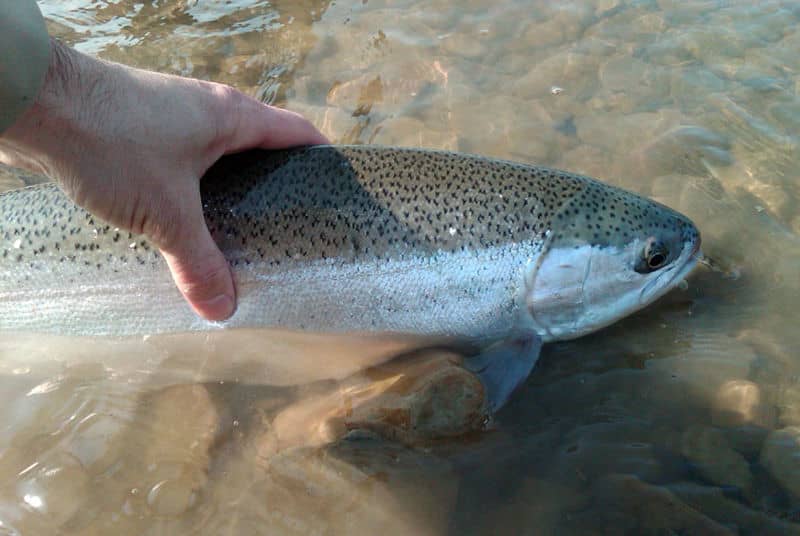Biologists Want to Give Hatchery Fish a Bigger Bite
OutdoorHub Reporters 04.28.14

Recent studies have shown that wild fish have a host of advantages over their hatchery-bred counterparts, included better chances of survival in the wild and increased aggression when pursuing prey. One group of researchers, however, says there is no reason that hatchery fish cannot catch up. In a tributary of the Alsea River, the Oregon Hatchery Research Center is attempting to see if it can bring the bite back to hatchery-bred fish.
According to The Oregonian, hatchery researchers and volunteers drawn from the state’s angling community are attempting to breed steelhead to bite more often, thereby increasing their chances of being caught by fishermen. This would lessen the chances of hatchery fish wandering into wild spawning grounds, and could also likely mean less wild fish caught. The Alsea hatchery releases 120,000 steelhead smolts every year, yet hatchery fish are not always the majority caught by anglers. In 2013, nearly six wild fish were caught for every one hatchery fish.
“As you fish a population, you tend to catch the most aggressive ones. Often times they are removed from the population. As a result, the population becomes less vulnerable to angling because it is less and less aggressive,” bass researcher David Philipp told the Associated Press.
Wild fish are more likely to bite, but it is an inherited trait. At the end of the first year in a three-year survey, researchers at Alsea found that hatchery fish spawned from wild parents are three times more likely to be caught than the hatchery’s standard stock. Now the hatchery is taking in angler-caught wild fish to breed successive generations. These fish will then be specially tagged with fin clips and released over the next three years.
It may be a while before researchers see concrete results, but they hope that the new breeding program will create better-biting fish. In turn, that could mean healthier fish for both hatchery-raised and wild populations.
“It’s an exciting idea for us,” said David Noakes, senior scientist at the Alsea research center. “Depending on what the answer is, we might be changing a lot of things about raising hatchery fish and stocking hatchery fish.”

